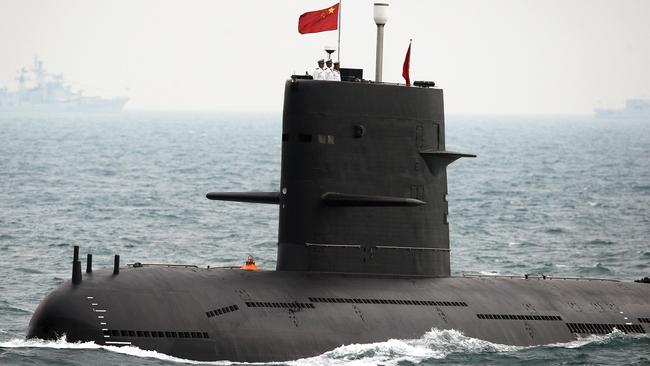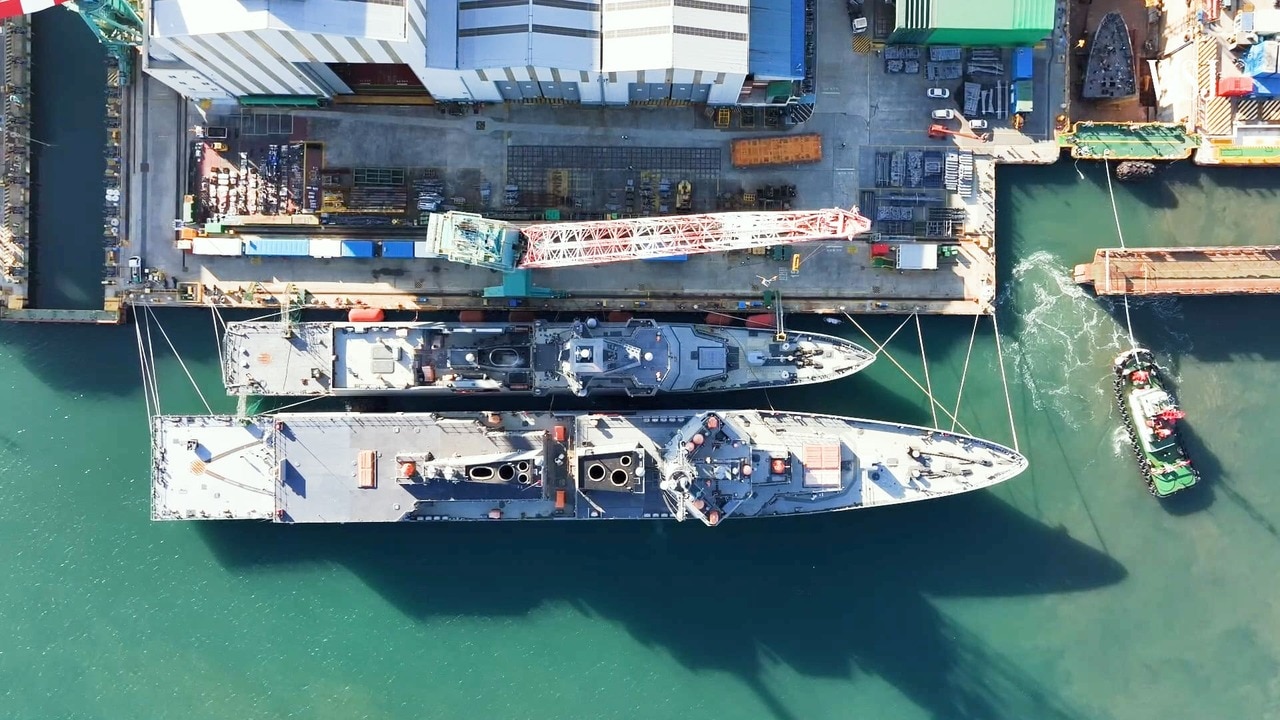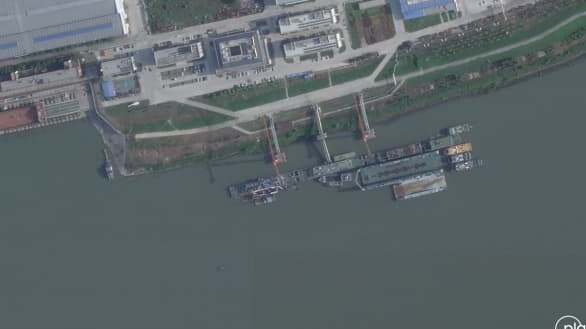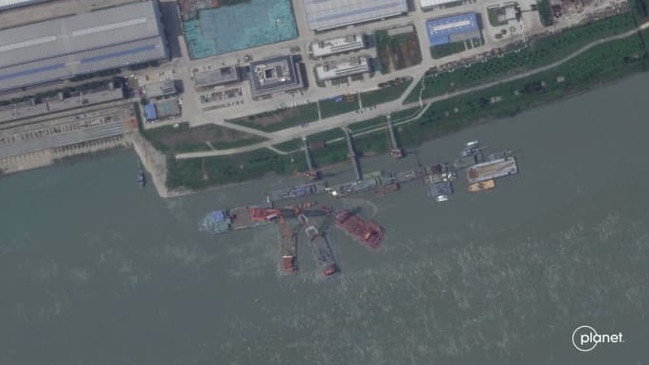China’s newest nuclear submarine sank, setting back its military modernisation
The pierside accident, which Chinese authorities scrambled to cover up, came as Beijing attempts to expand its navy.

China’s newest nuclear-powered attack submarine sank in the spring, a major setback for one of the country’s priority weapons programs, US officials said.
The episode, which Chinese authorities scrambled to cover up and hasn’t previously been disclosed, occurred at a shipyard near Wuhan in late May or early June.
It comes as China has been pushing to expand its navy, including its fleet of nuclear-powered submarines.
The Pentagon has cast China as its principal long-term “pacing challenge, ” and US officials say Beijing has been using political and military pressure to try to coerce Taiwan, a separately governed island that Beijing claims as part of its territory.
China says its goal in building a world-class military is to deter aggression and safeguard its overseas interests. A spokesman for the Chinese embassy didn’t immediately respond to a request for comment.

The US doesn’t know if the sub was carrying nuclear fuel at the time it sank, but experts outside the US government said that was likely.
Undersea technology has long been an area of US advantage, but China has been pushing hard to narrow the gap.
China has been moving to diversify the production of nuclear-powered submarines. Production has been centred in the northeastern city of Huludao, but China is now moving to manufacture nuclear-powered attack submarines at the Wuchang Shipyard near Wuhan.
Beijing had 48 diesel-powered attack subs and six nuclear-powered attack subs at the end of 2022, according to a Pentagon report issued last year on China’s military power, That report said China’s aim in developing new attack submarines, surface ships and naval aircraft is to counter efforts by the US and its partners to come to Taiwan’s aid during a conflict and to achieve “maritime superiority” within the first island chain, a string of territory from the Japanese archipelago through Taiwan and the Philippines to the South China Sea.
The Zhou-class vessel that sank is the first of a new class of Chinese nuclear-powered subs and features a distinctive X-shaped stern, which is designed to make the vessel more manoeuverable.
The sub was built by China State Shipbuilding Corp, a state-owned company, and was observed alongside a pier on the Yangtze River in late May when it was undergoing its final equipping before going to sea.
After the sinking, large floating cranes arrived in early June to salvage the sub from the river bed, according to satellite photos of the site.


“The sinking of a new nuclear sub that was produced at a new yard will slow China’s plans to grow its nuclear submarine fleet,” said Brent Sadler, a senior research fellow at the Heritage Foundation, a Washington think tank, and a retired US Navy nuclear submarine officer. “This is significant.” Neither the People’s Liberation Army, as the Chinese military is known, nor local authorities, have acknowledged the episode.
“It’s not surprising that the PLA Navy would try to conceal the fact that their new first-in-class nuclear-powered attack submarine sank pierside,” said a senior US defence official. “In addition to the obvious questions about training standards and equipment quality, the incident raises deeper questions about the PLA’s internal accountability and oversight of China’s defence industry, which has long been plagued by corruption.”
The first public indication that something was amiss at the shipyard near Wuhan came in the summer when Thomas Shugart, a former US submarine officer and an adjunct senior fellow at the Center for a New American Security, wrote a series of social-media posts noting the unusual activity of the floating cranes, which was captured by commercial satellite imagery.
Shugart surmised that there might have been an incident that involved a new type of submarine, but he didn’t know at the time that it was nuclear-powered.
“Can you imagine a US nuclear submarine sinking in San Diego and the government hushes it up and doesn’t tell anybody about it? I mean, Holy Cow!” Shugart said in an interview this week with The Wall Street Journal.
While the submarine was salvaged, it will likely take many months before it can be put to sea.
“The whole boat would be full of water,” Shugart said. “You’d have to clean out all the electronics. The electric motors may need to be replaced. It would be a lot of work.” American officials haven’t detected any indication that Chinese officials have sampled the water or nearby environment for radiation.
It is possible Chinese personnel were killed or injured when the sub sank, but US officials say they don’t know if there were casualties.
Shugart said that the risk of a nuclear leak was likely to be low as the sub hadn’t ventured out to sea and its reactors were probably not operating at a high power level.
The US has suffered similar setbacks, which proved costly. In 1969, the nuclear-powered USS Guitarro was moored at a shipyard in California when it sank following a series of mistakes by construction workers. It wasn’t officially commissioned until 32 months after its sinking.
Dow Jones Newswires







To join the conversation, please log in. Don't have an account? Register
Join the conversation, you are commenting as Logout